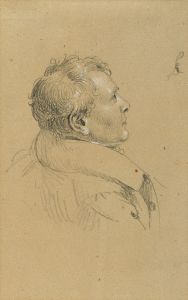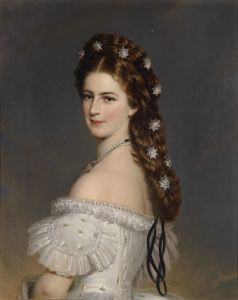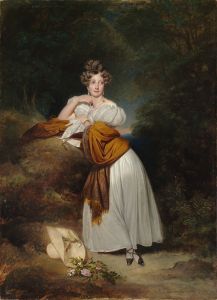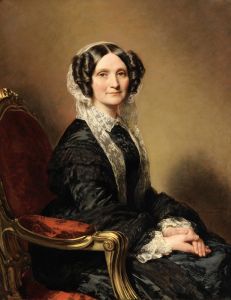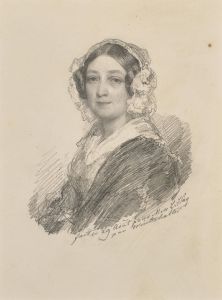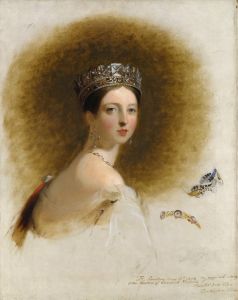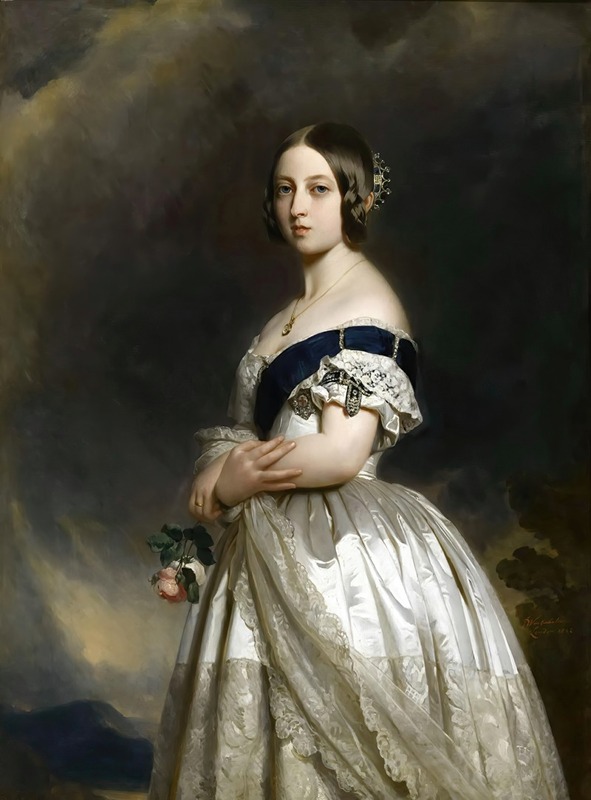
The Young Queen Victoria in 1837
A hand-painted replica of Franz Xaver Winterhalter’s masterpiece The Young Queen Victoria in 1837, meticulously crafted by professional artists to capture the true essence of the original. Each piece is created with museum-quality canvas and rare mineral pigments, carefully painted by experienced artists with delicate brushstrokes and rich, layered colors to perfectly recreate the texture of the original artwork. Unlike machine-printed reproductions, this hand-painted version brings the painting to life, infused with the artist’s emotions and skill in every stroke. Whether for personal collection or home decoration, it instantly elevates the artistic atmosphere of any space.
Franz Xaver Winterhalter's painting "The Young Queen Victoria in 1837" is a notable work that captures the likeness of Queen Victoria shortly after her ascension to the British throne. Winterhalter, a German painter renowned for his portraits of royalty and high society, was particularly celebrated for his ability to convey the elegance and grace of his subjects. This painting is one of the many portraits that contributed to his reputation as a favored artist among European nobility.
Queen Victoria became queen at the age of 18, following the death of her uncle, King William IV, in June 1837. Her ascension marked the beginning of a new era in British history, known as the Victorian Era, which was characterized by industrial, cultural, political, scientific, and military change within the United Kingdom, and was marked by a great expansion of the British Empire. Winterhalter's portrait of the young queen reflects the optimism and the sense of renewal that accompanied her early reign.
In the painting, Queen Victoria is depicted with a serene and composed expression, embodying the dignity and poise expected of a monarch. Winterhalter's skillful use of light and shadow enhances the regal quality of the portrait, highlighting the queen's youthful features and the luxurious textures of her attire. The artist's attention to detail is evident in the intricate depiction of the fabrics and jewelry, which not only serve to emphasize her royal status but also reflect the fashion of the time.
Winterhalter's work is characterized by its romantic style, which often idealized its subjects. This approach is evident in "The Young Queen Victoria in 1837," where the queen is portrayed with an almost ethereal quality, suggesting both her youth and her newfound authority. The painting is a testament to Winterhalter's ability to capture the essence of his subjects while also appealing to the tastes and sensibilities of the period.
The portrait of Queen Victoria by Winterhalter is significant not only as a work of art but also as a historical document. It provides insight into the early years of Victoria's reign and the image she sought to project as a young monarch. The painting is part of a larger body of work by Winterhalter that includes numerous portraits of European royalty, each contributing to the visual narrative of 19th-century aristocracy.
Winterhalter's relationship with the British royal family continued throughout his career, and he painted several more portraits of Queen Victoria and her family. His works were highly regarded for their elegance and technical proficiency, and they remain an important part of the royal art collection.
"The Young Queen Victoria in 1837" is a reflection of both the artist's skill and the historical context of the time. It captures a moment of transition and hope, as a young queen began her long and influential reign over the British Empire. The painting remains a valuable piece of cultural heritage, offering a glimpse into the life and times of one of history's most iconic monarchs.








